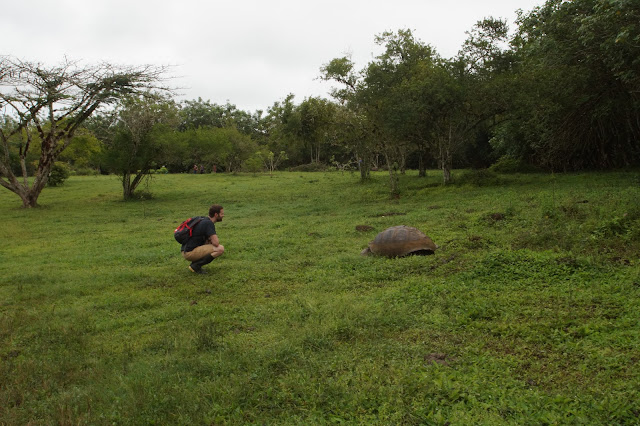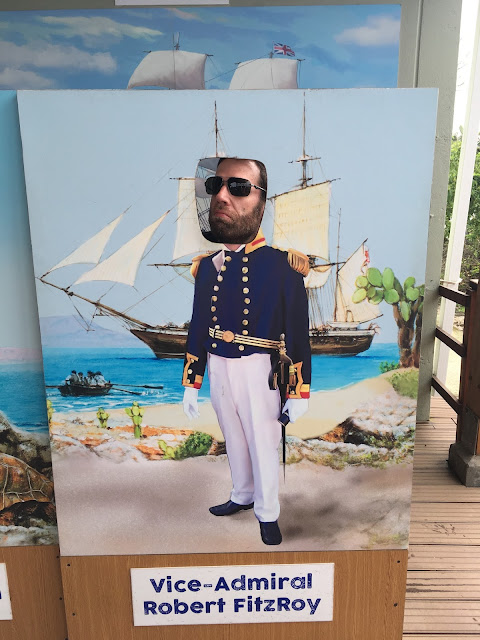Cuzco and Machu Picchu
After leaving Lima, we flew to Cuzco. At 11,000 feet, we wanted at least a day to try to acclimate to the high altitude. I don't think either of us thought the change in altitude would be as difficult as it was on us; we didn't explore much of Cuzco because mere walking around took so much more effort with the decrease in oxygen.
Cuzco is the former capital of the Incan empire. The word "Cuzco" translates as "navel," symbolizing its critical role in trade and culture.
There are about 500,000 residents in Cuzco, and many thousands tourists every week (the park caps entry at 2,500 people a day, but those spots generally sell out). The town is well set up for international visitors. Here is the breakfast room from one of our hotels; it looked out onto the tile rooftops across the city.
I drank a lot of coca tea to help ease the symptoms of the altitude.
Because of the high number of tourists, visiting Cuzco is quite simple. We even had one of our better meals from the trip in Cuzco.
Before we leave Cuzco, here are some random dogs sitting in random doorways!
We were staying in Cuzco as the base site for beginning our trip to Machu Picchu! From Cuzco, we caught the train into the Andes, and to the park itself.
In town, we stayed at this adorable-looking tree house of a hotel. The only downside was that we had to climb yet even more stairs (probably the equivalent of 8 flights) to get to the room, making it tempting to never leave the hotel.
The park itself was much larger than either of us had anticipated.

Built in 1450, and abandoned less than 100 years later, it was a sacred and residential site for around 1,000 people. The city spreads over 5 miles and includes over 3,000 hand-carved stone stairs.
These engineering elements seem interesting! Too bad there's no sign to help us understand what we are looking at. (After the fact Googling tells me that archeologists believe that priests prayed in this room in the morning, as they watched the sunrise through the windows.)
Example of the masonry throughout the city. Everything is dry-stacked -- no mortar.
We made friends with some locals.
We certainly got a workout that day!
Cuzco is the former capital of the Incan empire. The word "Cuzco" translates as "navel," symbolizing its critical role in trade and culture.
There are about 500,000 residents in Cuzco, and many thousands tourists every week (the park caps entry at 2,500 people a day, but those spots generally sell out). The town is well set up for international visitors. Here is the breakfast room from one of our hotels; it looked out onto the tile rooftops across the city.
I drank a lot of coca tea to help ease the symptoms of the altitude.
Because of the high number of tourists, visiting Cuzco is quite simple. We even had one of our better meals from the trip in Cuzco.
Before we leave Cuzco, here are some random dogs sitting in random doorways!
We were staying in Cuzco as the base site for beginning our trip to Machu Picchu! From Cuzco, we caught the train into the Andes, and to the park itself.
In town, we stayed at this adorable-looking tree house of a hotel. The only downside was that we had to climb yet even more stairs (probably the equivalent of 8 flights) to get to the room, making it tempting to never leave the hotel.
Here is Ed making sure he keeps his followers happy, even while away.
One of the things we learned about Peru -- and Ecuador -- is that information is not very easy to get. We did our best to plan for our major excursions, which included Machu Picchu. And, using the online and print resources we had available to us, as well as talking to people who have gone in recent years, we decided that an early morning wake-up call would still give us plenty of time to walk to the center of town and wait for the bus that would take us to Machu Picchu park. I think we were in line before 7 am. By the time we got there, the line was already many blocks long.
It was an inauspicious start to the day, but, everyone was in the same boat and we were just glad to get to the park.
The park itself was much larger than either of us had anticipated.

Built in 1450, and abandoned less than 100 years later, it was a sacred and residential site for around 1,000 people. The city spreads over 5 miles and includes over 3,000 hand-carved stone stairs.
These engineering elements seem interesting! Too bad there's no sign to help us understand what we are looking at. (After the fact Googling tells me that archeologists believe that priests prayed in this room in the morning, as they watched the sunrise through the windows.)
Example of the masonry throughout the city. Everything is dry-stacked -- no mortar.
Only 30% of the structures have been restored; ongoing archeological work continues and will therefore make the park even larger.
Inside the park, you are able to explore both worship areas and residential ones, but due to the lack of signage, unless you had a guide or had done considerable research ahead of time, you don't necessarily know what you are looking at.
We made friends with some locals.
It is very steep here.
The precision of the angle and the stonework of this staircase in the foreground absolutely kills me.
We certainly got a workout that day!
































Comments
Post a Comment